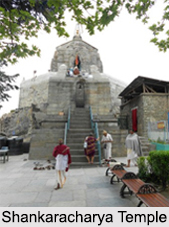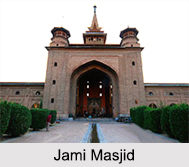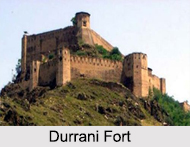 Monuments of Jammu and Kashmir represent a glorious, unique and historical tradition of the rulers of that province. The people of this state share a great historical heritage with each other due to the presence of different religion and culture. These monuments exhibit a rich architectural grandeur of that period, when they were constructed.
Monuments of Jammu and Kashmir represent a glorious, unique and historical tradition of the rulers of that province. The people of this state share a great historical heritage with each other due to the presence of different religion and culture. These monuments exhibit a rich architectural grandeur of that period, when they were constructed.
Various Monuments of Jammu and Kashmir
Some of the most popular monuments of Jammu and Kashmir are Jami Masjid, Hazratbal Mosque, Khanqah of Shah Hamadan, Amar Mahal Palace, Ram Singh Palace, Shankaracharya Temple, Hari Parbat Fort and Temple of Sharika Devi, Bahu Fort and Garden, Thicksey Monestary and Palace of Sengge Namgyal, Charar-i-Sharief, etc. The monuments have been detailed below:
Jami Masjid: Jami Masjid is the largest mosque in Kashmir situated in Srinagar. It was constructed by Sultan Sikandar in 1400 and was destroyed thrice by fire. This Indo-Islamic architecture was rebuilt by Maharaja Pratap Singh in the later period. Its 370 wooden pillars, 4 minars and 8 wooden columns are the major attractions among the tourists throughout the world. With its sheer colossal beauty, Jami Masjid stands as one of the prized monuments of Jammu and Kashmir.
 Hazratbal Mosque: Hazratbal Mosque is a white marble edifice situated on the western shores of Dal Lake. The name of the mosque comes from the Urdu word Hazrat, which means "respected", and the Kashmiri word bal, means "place". Thus it means the place which is given high regards and is respected among the people. It is the only mosque in Srinagar that has a domed roof instead of pagoda like roofs.
Hazratbal Mosque: Hazratbal Mosque is a white marble edifice situated on the western shores of Dal Lake. The name of the mosque comes from the Urdu word Hazrat, which means "respected", and the Kashmiri word bal, means "place". Thus it means the place which is given high regards and is respected among the people. It is the only mosque in Srinagar that has a domed roof instead of pagoda like roofs.
Khanqah of Shah Hamadan: Khanqah of Shah Hamadan is the first mosque constructed in Srinagar in 1395. Shah Hamadan was a Persian, who came to Kashmir to spread the Islam religion in the 13th century. The mosque is a wooden structure, wonderfully crafted and painted with hanging bells.
Shankaracharya Temple: Shankaracharya temple is situated on the summit of the Takht-i-Sulaiman hill in Srinagar and is one of the most important monuments of Jammu and Kashmir. This temple is dedicated to Lord Shiva; it is situated at a height of 1,000 feet above the plain and it overlooks the city of Srinagar. This temple is also known as Jyesteshwara temple or Pas-Pahar. It is constructed on an octagonal plinth with flights of steps.
Durrani Fort and Sharika Temple: Mughal Emperor Akbar built an outer wall on the Hari Parbat hill in 1590 to construct a fort to build a new capital named Nager Nagor. But the project was never completed. Later, in 1808 under the rule of Shuja Shah Durrani, the present fort was constructed which is known as Durrani Fort. Hari Parbat hill is also known as Pradyumna Peeth. It is considered to be a sacred place by the Kashmiri Pandits; they also host a temple of Shakti, which is known as Sharika Temple. It is dedicated to goddess Jagadamba Sharika Bhagawati. She is depicted as having 18 arms and sitting in a Shri Chakra.
 Amar Mahal Palace and Ram Singh Palace: Amar Mahal Palace in Jammu and Ram Singh Palace in Udhampur are the most famous palaces of the state. Amar Mahal palace was the resident palace of the Dogra rulers in Kashmir and an epitome of royalty. Ram Nagar Palace has the famous Sheesh Mahal palace, Darbal hall and Rang Mahal; all the walls of the halls are very meticulously designed and decorated with the stucco work and painted with floral designs.
Amar Mahal Palace and Ram Singh Palace: Amar Mahal Palace in Jammu and Ram Singh Palace in Udhampur are the most famous palaces of the state. Amar Mahal palace was the resident palace of the Dogra rulers in Kashmir and an epitome of royalty. Ram Nagar Palace has the famous Sheesh Mahal palace, Darbal hall and Rang Mahal; all the walls of the halls are very meticulously designed and decorated with the stucco work and painted with floral designs.
Bahu Fort: This fort is located in Jammu city; it is said to be built by an earlier ruler. Later it was refurbished during the Dogra Empire by Raja Gulab Singh in the 18th century. The fort is a religious place, and within its entourage, there is a temple dedicated to the Hindu goddess Kali, who is the presiding deity of Jammu. The temple is locally known as the "Bawe Wali Mata temple".
Thicksey Monastery and Palace of Sengge Namgyal: This monastery is a 9 storied palace, which is located on the hills of Leh. It is one of the dominant features of the city, which was built by King Sengge Namgyal. This astounding piece of Tibetan architecture is said to have been the inspiration behind the construction of Potala Palace of Dalai Lama in Lahasa, China. Thicksey Gompa located at an altitude of 3600 meters above sea level and 20 kilometers from the town of Leh is another important monastery in the state. This Gompa is the seat of Tiksey Rinpoche, who is the head of Gelug School in Ladakh.
Charar-i-Sharief: The tomb of Sheikh Noor-ud-Din Noorani is considered to be one of the most sacred Muslim shrines in India. It is situated approximately 28 km from Srinagar, en route to Yusmarg. The Shrine of Charar-i-Sharief is approximately 600 years old. It is popularly known as the "Sheikh Noor-ud-Din Wali".



















